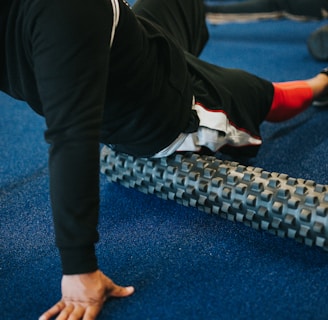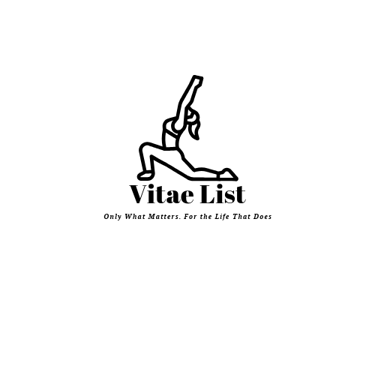Recovery Tools for Lifters: Massage Guns, Foam Rollers, and More
Discover the best recovery tools for lifters—from massage guns to foam rollers—to reduce soreness, improve mobility, and boost muscle recovery.
FITNESS GEAR
Vitae List
10/15/20254 min read


Recovery Tools for Lifters: Massage Guns, Foam Rollers, and More
Disclosure: Vitae List is a participant in the Amazon Services LLC Associates Program, an affiliate advertising program designed to provide a means for sites to earn fees by linking to Amazon.com and affiliated sites. As an Amazon Associate, we earn from qualifying purchases at no extra cost to you.
When it comes to strength training, most people emphasize workouts, nutrition, and supplements—but recovery is the silent driver of long-term progress. If your muscles aren’t healing properly between sessions, performance drops, soreness lingers, and gains stall.
Fortunately, today’s athletes have access to an arsenal of recovery tools that speed up muscle repair, enhance circulation, and keep you training consistently. Whether you prefer the deep pulse of a massage gun, the tried-and-true foam roller, or advanced compression and infrared devices, the right tools can elevate your recovery routine from average to elite.
Let’s explore the best recovery tools for lifters—and how to use them effectively.
Why Recovery Tools Matter for Lifters
Every heavy session creates microscopic muscle damage and inflammation. Recovery tools help your body repair faster by stimulating blood flow, releasing muscle tension, and improving flexibility.
When used consistently, they don’t just help you feel better—they also:
Reduce delayed onset muscle soreness (DOMS)
Enhance performance and mobility
Lower injury risk over time
Support nervous system recovery for better sleep and mood
Think of recovery tools as the bridge between workouts—the method that allows you to train hard, bounce back faster, and keep stacking progress.
1. Massage Guns: Deep Tissue Therapy at Home
Massage guns deliver percussive therapy, a form of rapid, repetitive pressure that penetrates deep into muscle tissue. This technique promotes circulation, reduces stiffness, and eases soreness after tough lifts.
Benefits
Speeds up recovery between workouts
Loosens tight muscles pre-lift
Improves flexibility and range of motion
Convenient for targeting specific areas like quads, glutes, and shoulders
How to Use
Use the gun on major muscle groups for 1–2 minutes each, gliding slowly over the surface. Avoid pressing too hard—let the percussive motion do the work. Use lighter pressure for smaller areas or sensitive spots.
Top Picks
Therabody Theragun MINI – premium model with smart app guidance. https://amzn.to/47aZV46
Hypervolt 2 by Hyperice – quiet, ergonomic, and travel-friendly. https://amzn.to/3Ws5Ixv
Ekrin Athletics B37 – great midrange balance of power and portability. https://amzn.to/46Ury2G
2. Foam Rollers: A Lifters’ Mobility Staple
Foam rollers remain one of the simplest yet most effective recovery tools. They provide self-myofascial release (SMR), helping to break up adhesions and relax tight fascia.
Benefits
Reduces muscle stiffness and soreness
Improves flexibility and mobility
Promotes faster recovery post-training
Helps correct imbalances from repetitive lifts
How to Use
Roll slowly across major muscle groups—quads, calves, lats, and hamstrings—for 30–60 seconds each. Pause and breathe through tender spots to release tension. Use a smooth roller for light pressure or a textured roller for deeper muscle work.
Top Picks
TriggerPoint GRID Foam Roller – durable and textured for deeper pressure. https://amzn.to/4n4Tt4A
RumbleRoller Deep-Tissue Roller – aggressive texture for advanced athletes. https://amzn.to/3IQ9762
3. Compression and Massage Boots
Compression boots use pneumatic technology to deliver dynamic pressure across your legs. They help move fluid, reduce inflammation, and speed up recovery after lower-body training.
Benefits
Reduces swelling and soreness
Improves circulation and muscle oxygenation
Accelerates recovery after leg days or endurance work
How to Use
Slip them on post-workout for 20–30 minutes while relaxing. Start with lower pressure and gradually increase as you get used to the sensation.
Top Picks
Fit King Air Compression Leg Massager – strong performance for a fraction of the cost.
4. Mobility Balls and Peanut Rollers
Sometimes a large roller can’t hit the smaller, stubborn areas—like the traps, glutes, or rotator cuff. That’s where mobility balls and peanut rollers shine.
Benefits
Targets small, hard-to-reach muscle groups
Breaks up tight spots and trigger points
Improves joint mobility and posture
How to Use
Place the ball or peanut under the area you want to target, then apply pressure by leaning or lying on it. Hold for 20–30 seconds or roll gently for dynamic release.
Top Picks
Epitomie Fitness Muscle Max Massage Ball – textured surface for firm grip and deep pressure. https://amzn.to/3W3Pbzz
5 Billion Fitness Peanut Massage Ball – ideal for spine, traps, and back recovery. https://amzn.to/3KKdEHN
5. Infrared and Heat Therapy Devices
For lifters dealing with deep soreness or chronic tightness, infrared therapy and heat-based recovery tools can be a game changer. Unlike surface heat, infrared penetrates deeper into muscle tissue for sustained relief.
Benefits
Enhances circulation and tissue repair
Eases stiffness and chronic soreness
Promotes relaxation and better sleep
Top Picks
Infrared Sauna Blanket – clinically proven deep-tissue relief. https://amzn.to/4964Ju9
6. Cold Therapy and Ice Baths
Cold therapy is as old as training itself—and it’s making a comeback. Exposure to cold reduces inflammation, constricts blood vessels, and supports the body’s natural healing cycle.
Benefits
Reduces inflammation and swelling
Speeds up muscle recovery
Enhances mental resilience and focus
How to Use
Submerge yourself in 50°F (10°C) water for 3–5 minutes post-workout, or use localized cold packs for joint recovery. Consistency is key—start small and build tolerance gradually.
Recovery Pod 139-Gallon Oval Ice Bath - https://amzn.to/47bhXDp
Building a Recovery Routine That Works
You don’t need every gadget on the market. The best recovery plan is one you’ll actually use consistently. Here’s a sample approach for strength athletes:
TimingToolPurposePre-WorkoutMassage GunMuscle activation, warm-upPost-WorkoutFoam RollerFlush out tension, improve mobilityRest DaysCompression Boots or Infrared PadDeep recovery, circulationEveningMobility Ball or StretchingRelaxation and joint health
By combining these strategically, you’ll recover faster, train more effectively, and keep pushing your performance ceiling higher.
Final Thoughts
The strongest athletes don’t just train harder—they recover smarter. Massage guns, foam rollers, compression devices, and heat or cold therapy all have their place in a balanced recovery plan.
Prioritizing recovery isn’t about being soft—it’s about being sustainable. It’s what keeps your muscles firing, your joints healthy, and your progress steady for years to come.
Train with intensity, recover with intention, and you’ll stay strong for the long haul.
